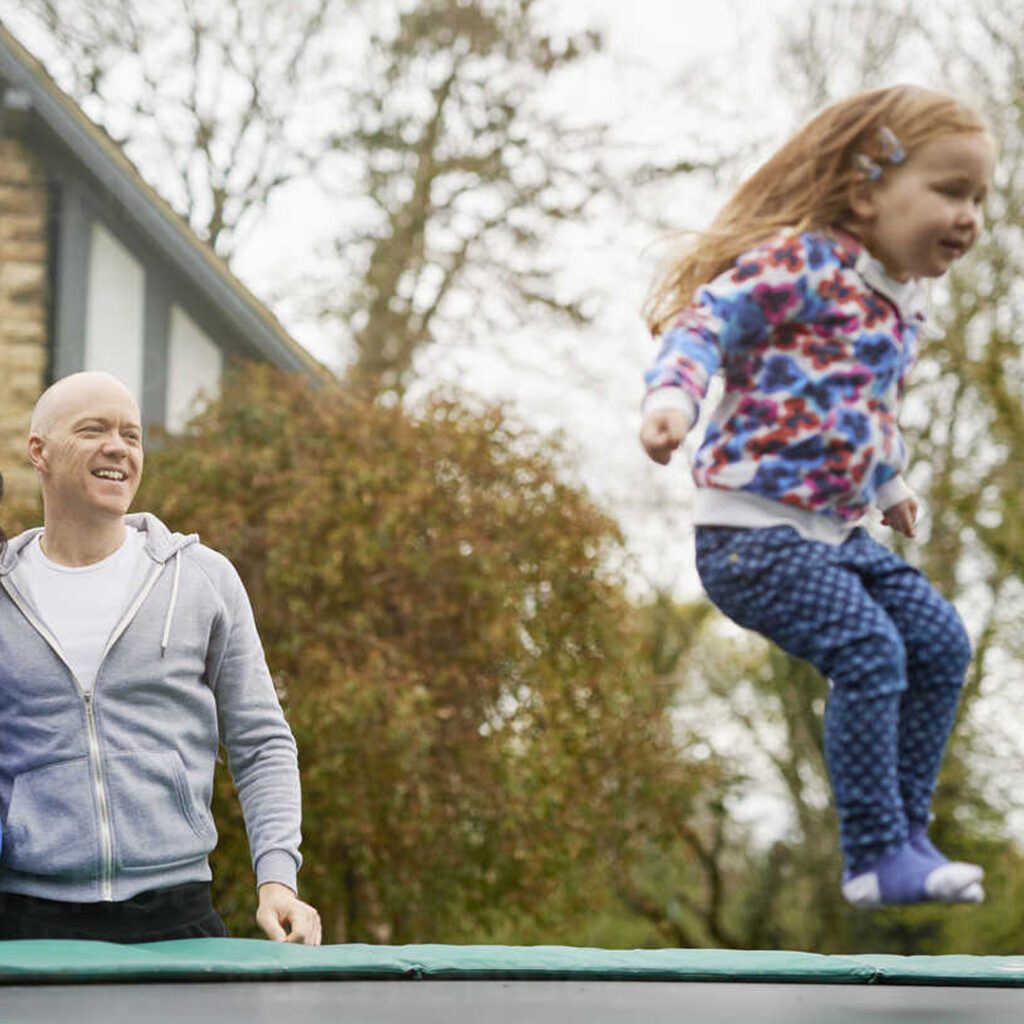
The playground trampoline is always the hottest attraction, with excited children bouncing higher and higher. But while trampolines promise hours of fun, they can also pose some safety risks. As a parent, you want playtime to be carefree for your children. That’s why it’s key to learn a few simple safety tips before your little jumpers hit the playground trampoline.
With some basic precautions, you can relax and let the children enjoy jumping, knowing you’ve helped minimise the chances of accidents and injuries.
In this blog you will learn about the safety tips you should know about playground trampoline.
Understanding the Risks
According to studies, trampoline accidents account for nearly 100,000 emergency room visits annually, most involving children. The most common injuries are sprains, strains, and fractures, but head and neck injuries also frequently occur. As a parent, these statistics should give you pause.
Lack of proper safety precautions
Many accidents happen when children try risky manoeuvres, collide into one another, or fall off the trampoline. But even normal jumping can lead to injury if the trampoline is in disrepair or not properly safety-padded. The key to avoiding accidents is constant adult supervision, enforcing safety rules like “one jumper at a time,” and properly maintaining protective padding and netting.
A Parent’s Responsibility for Safety
While trampolines can be fun recreational activities for children, as with any physical sport or playground equipment, there are inherent risks. As parents, it’s a responsibility to minimise dangers whenever possible. That means educating children on proper trampoline safety, ensuring safety equipment is properly installed and functioning, supervising them at all times, and considering alternatives like gymnastics classes or bounce houses which may pose lower risks. Their health and safety should be our top priority.
Choosing the Right Playground Trampoline
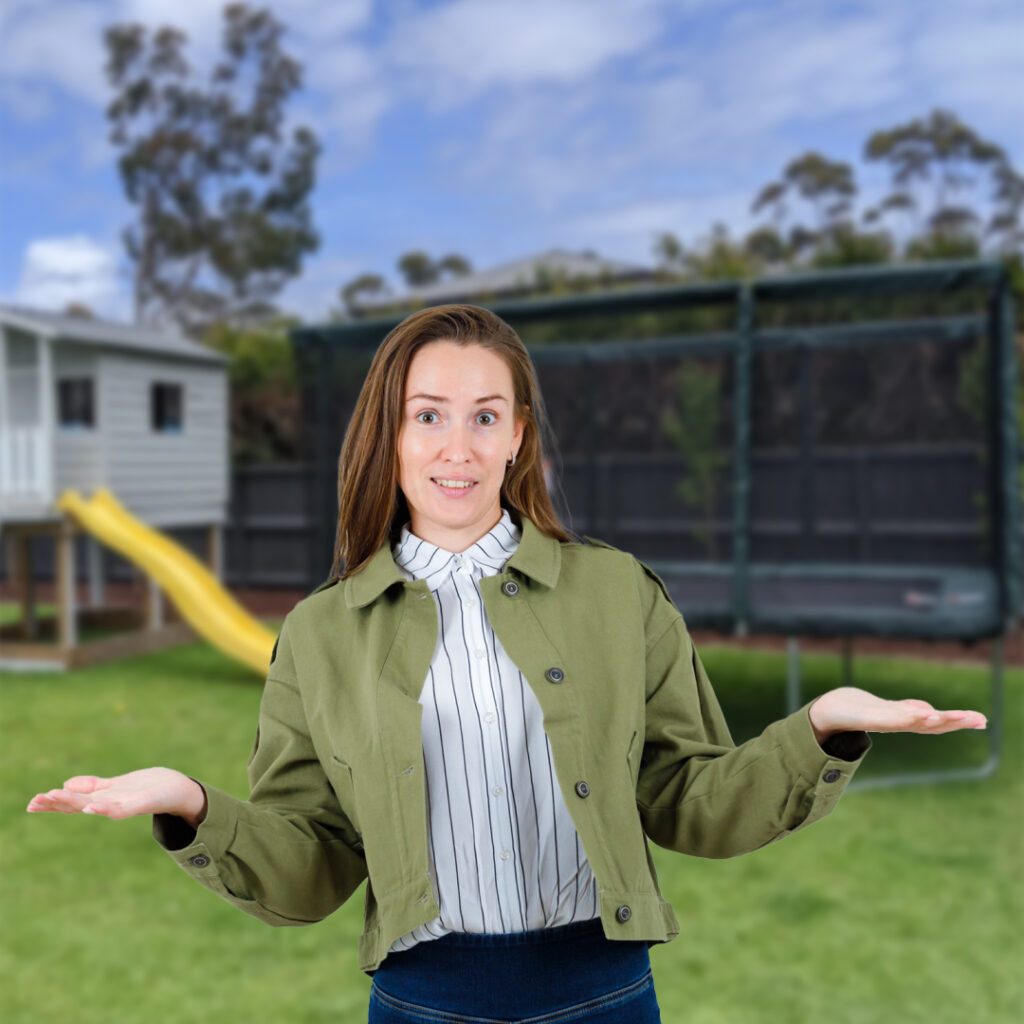
Trampoline Size
For a playground, you’ll want a large 14ft trampoline. Bigger trampolines can accommodate more jumpers at once and tend to have more powerful springs for higher bouncing. However, extremely large trampolines, those over 16 feet, can be difficult to control and may not be suitable for younger children. A good size for most playgrounds is 14 or 15 feet.
Safety Pads and Nets
Look for thick, high-quality safety pads that cover the springs, frame, and any hard edges. Pads should be securely attached, weather-resistant, and with reinforced stitching. Safety nets surrounding the trampoline are also a must for playgrounds. Safety enclosure net should enclose the entire trampoline, with small mesh nets that are properly secured to prevent falls.
Sturdy Construction
Playground trampolines go through a lot of use and stress, so durability is key. Look for galvanised steel frames and rust-resistant springs. The mat, springs, and pads should all be securely attached to the frame to prevent tears or detachment. All parts should be weather-resistant. Reputable brands like Springfree, Skywalker, and Upper Bounce are good options.
Establishing Safety Rules
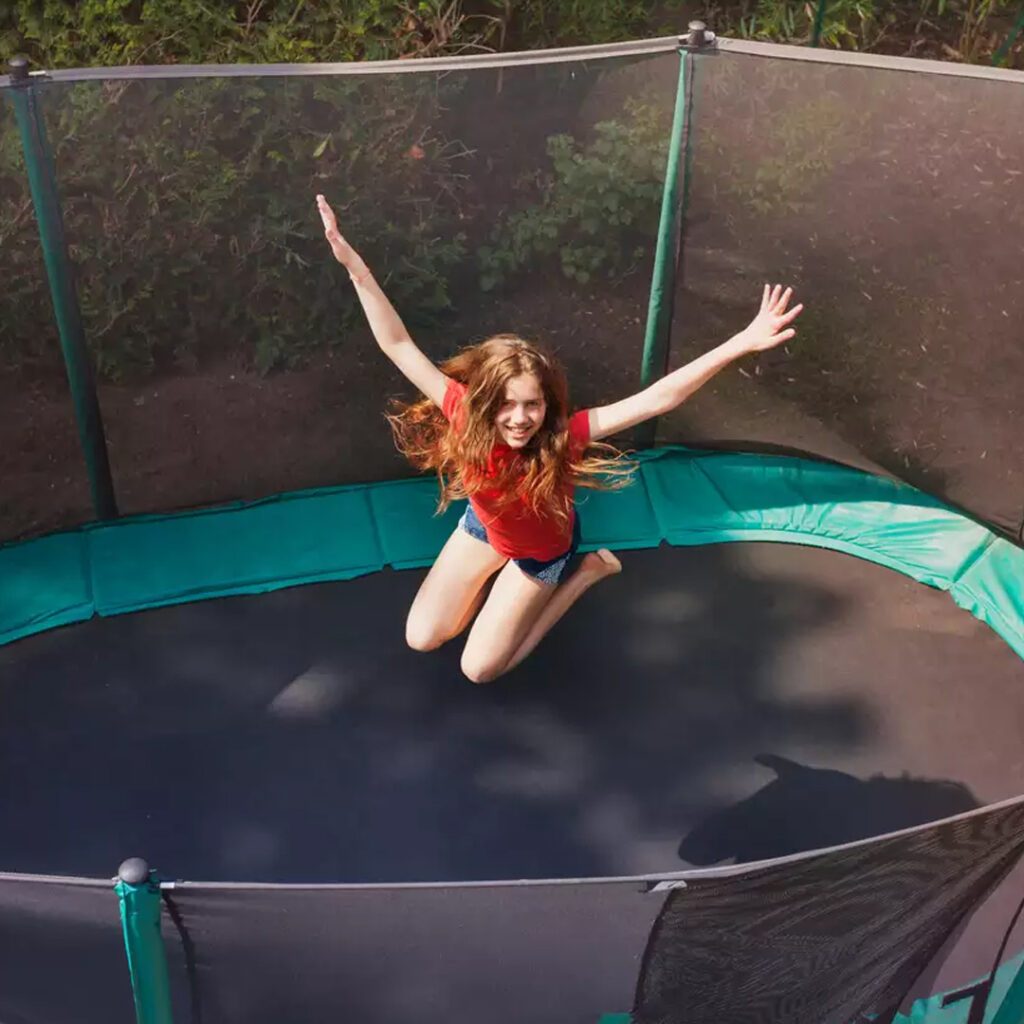
Age and Weight Limits
Follow the manufacturer’s recommendations for the maximum number of jumpers, their ages, and weight limits for your trampoline model. As a general rule, only one jumper at a time is safest, especially for smaller trampolines. For larger trampolines, limit jumping to one jumper per 15 square feet of jumping surface. Prohibit somersaults or flips for younger children.
Safe Jumping Rules
Go over the rules before anyone is allowed to jump. Key things to cover: no pushing or colliding with other jumpers, no somersaults or flips without proper training, always jump in the centre of the mat, and stop jumping if you start to feel tired. It’s a good idea to post the rules near the trampoline as a reminder.
Spotting and Supervision
Closely supervise jumpers, especially younger children, and enforce rules. Have a trained spotter, especially when younger children or beginners are jumping. Spotters stand next to the trampoline to help guide the jumper to the centre of the mat, and ensure a controlled landing to prevent falls or collisions. Constant adult supervision is key to preventing injuries on trampolines.
Supervision and Monitoring
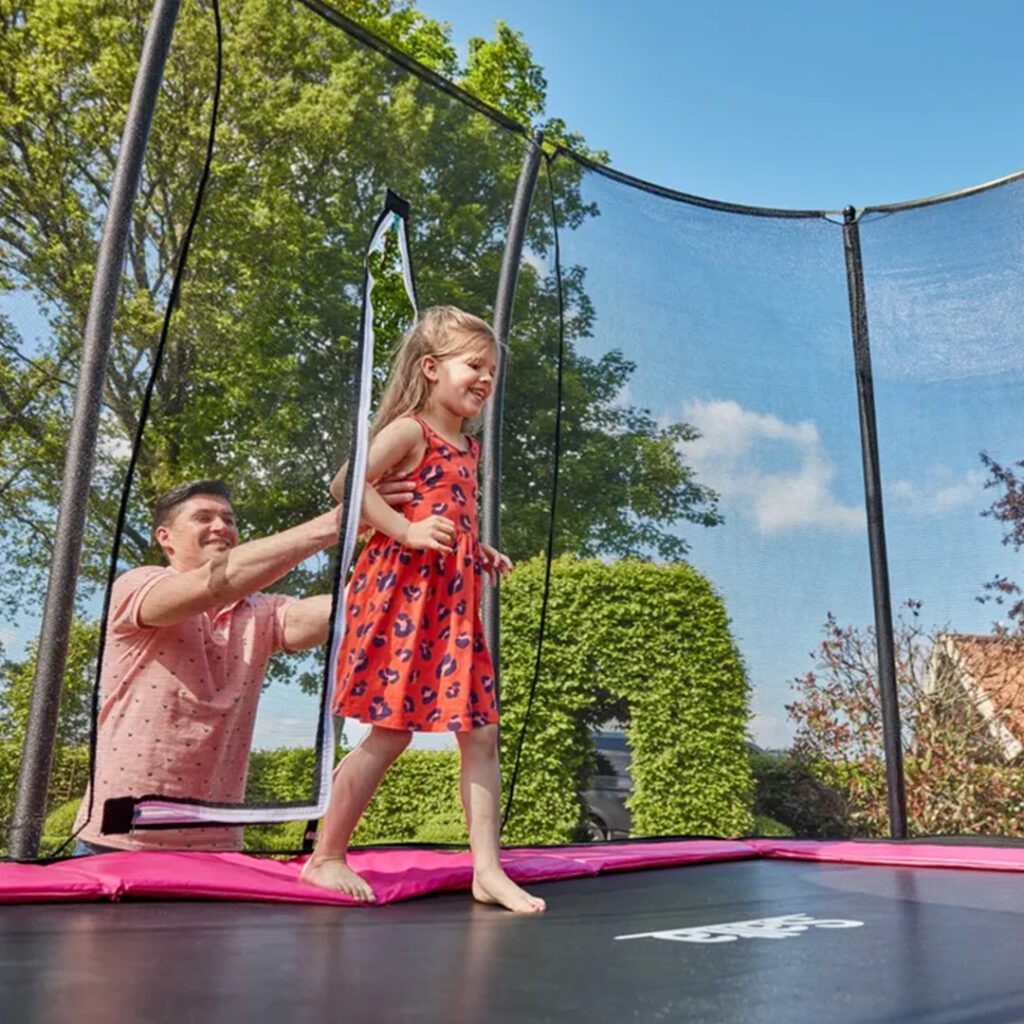
As a parent, your role in supervising your child on the playground trampoline is crucial. Watch them closely at all times, especially when other children are bouncing with them. Have a clear view of the trampoline from wherever you are, and try to keep other children from crowding the trampoline. Too many children bouncing at once can lead to collisions and injuries.
Set clear rules for trampoline use and enforce them consistently. Only allow one child to bounce at a time, teach them to bounce in the centre of the trampoline, and forbid any somersaults or flips. Make it a rule that your child can only bounce as high as their waist to reduce the risk of loss of control or landing incorrectly after a jump.
Take turns and set time limits for bouncing to avoid fatigue. Have your child take a break after a few minutes to rest and rehydrate. Tired children are more prone to injury on the trampoline as their coordination and balance decrease with fatigue. Watch for signs your child is getting tired like less control or sloppy jumping.
Ensure proper safety gear like helmets, elbow and knee pads are worn at all times. While safety nets or padding around a trampoline can help prevent falls, they do not prevent injuries from collisions or poor landing on the trampoline mat. Proper safety gear is essential for your child’s protection.
By closely supervising your child on the playground trampoline, setting clear rules for safe use and taking appropriate precautions, you can allow them to have fun while minimising the risk of injury. Trampolines can be enjoyed safely as long as children are monitored properly and parents take an active role in promoting safe bouncing habits. Your eagle-eyed supervision and enforcement of safety are key to keeping your little ones protected on the playground trampoline.
Educating Children About Trampoline Safety
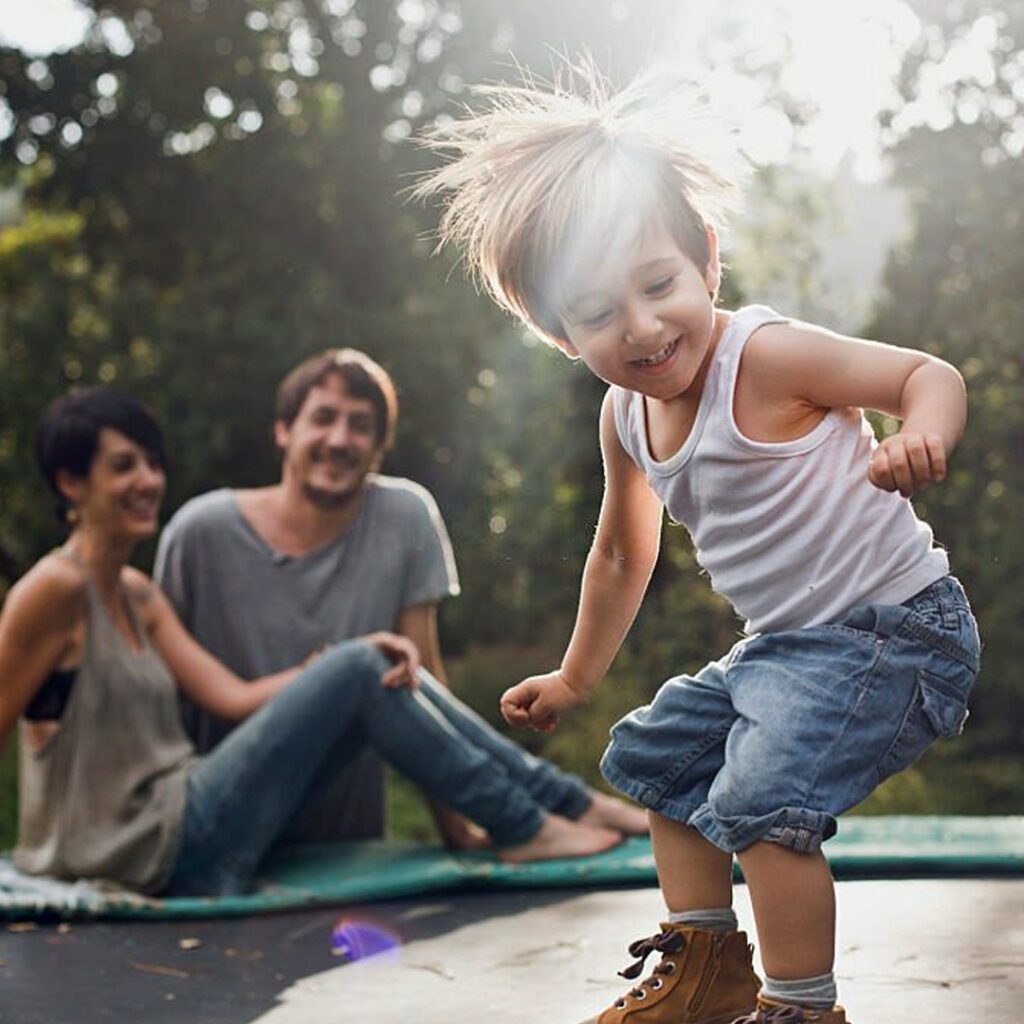
Set Clear Rules
As a parent, it’s crucial to set strict rules for trampoline use and enforce them consistently. Go over the rules with your children before letting them jump, and post the guidelines near the trampoline as a reminder. Key rules include only one jumper at a time, no flips or somersaults, always land on your feet, and stop jumping if someone falls or gets hurt. Supervise children closely, especially when first learning.
Lead by Example
Practise the safety rules yourself every time you jump with your children. Wear proper protective gear like wrist guards, trampoline socks and knee pads to set a good example. Show them the proper way to get on and off the trampoline, how to control their bounce and always land on the middle of the mat. Your children will mimic your behaviour, so make sure you follow all the guidelines you set for them.
Open Communication
Encourage your children to tell you right away if they feel unsafe or see someone else breaking the rules. Let them know that they will not get in trouble for speaking up about safety concerns. Ask them regularly if they have any questions or worries about trampoline use. An open line of communication will help ensure that everyone follows the rules and has an enjoyable, accident-free experience.
While trampolines can be great fun, they do pose risks if used irresponsibly. Educating your children about safety, setting clear rules and leading by example are the best ways to minimise hazards. With close supervision and open communication, you can enjoy the trampoline together while staying safe.
Conclusion
By following these simple guidelines, you can let them enjoy the thrills these bring while minimising the risks. Always supervise closely, teach them basic safety rules and don’t let them get too wild. Restrict access for younger children, ensure the equipment is in good condition and watch out for overcrowding. And remember – they do still need to burn off all that boundless energy somehow! As long as you take sensible precautions, trampolining can be a fun activity that helps them develop strength and coordination. With your watchful eye, playground tramps can provide hours of healthy, active play.


